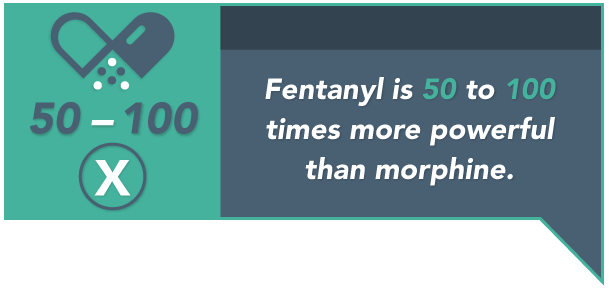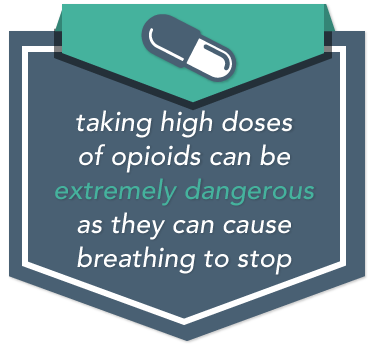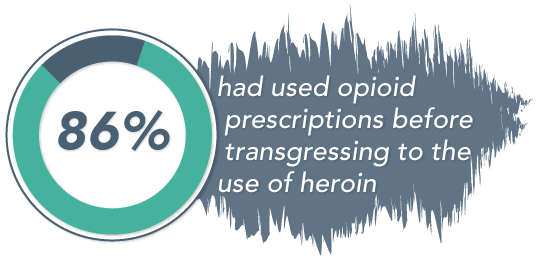
Fentanyl: A Definition
Fentanyl is a prescription opioid usually prescribed to treat different pain conditions. In makeup, fentanyl is comparable to morphine, but more powerful and potent, as explained by the National Institute on Drug Abuse (NIDA). In terms of numbers, Fentanyl is 50 to 100 times more powerful than morphine. As prescribed by a doctor, it comes in an injectable form, but it may also be manufactured illegally—the result of which has caused an increase in the amount of overdoses from fentanyl, as stated by NIDA. 
How Fentanyl Affects The Body And Brain
Fentanyl works much the same as do other opioids; that is, it binds to the body’s opioid receptors, the part of the brain which controls the body’s pain and emotions, including a person’s feeling of reward. Opioids work in the brain by increasing the dopamine levels once they reach the opioid receptors, which in turn produces a euphoric and relaxed feeling. However, fentanyl has a host of negative and dangerous side effects, such as:
- Drowsiness
- Nausea
- Confusion
- Constipation
- Sedation
- Tolerance
- Addiction
- Respiratory depression and arrest
- Loss of consciousness
- Coma
- Fatal overdose
The Danger Of Fentanyl Abuse
Because opioid receptors are also found in the parts of the brain which control breathing, taking high doses of opioids can be extremely dangerous as they can cause your breathing to stop. NIDA reports that with fentanyl, this risk is increased even more, due to its higher rate of potency.
 According to Mayo Clinic, addiction is characterized by physical dependence marked by a tolerance to the substance. It is also accompanied by an uncontrollable need to continually seek the drug and the coveted high, despite a detrimental affect to an individual’s life. Tolerance is of substantial concern for those people who illicitly use fentanyl, as it means that they may take increasingly higher doses of the drug to try to achieve the high, which can lead to an overdose.
According to Mayo Clinic, addiction is characterized by physical dependence marked by a tolerance to the substance. It is also accompanied by an uncontrollable need to continually seek the drug and the coveted high, despite a detrimental affect to an individual’s life. Tolerance is of substantial concern for those people who illicitly use fentanyl, as it means that they may take increasingly higher doses of the drug to try to achieve the high, which can lead to an overdose.
Signs Of Prescription Opioid Abuse
Since fentanyl is commonly a prescribed medication, it is important to recognize the signs of abusing it in its prescription form. Some of these signs include the following, listed by the Mayo Clinic:
- Stealing, forging, or selling prescriptions
- Taking a higher dose than was prescribed
- Having excessive mood swings, or hostility
- Experiencing increases/decreases in sleep
- Engaging in poor decisions
- Appearing high—unusually energetic or unusually sedated
- Exhibiting a habit of “losing” prescriptions, in turn soliciting a doctor for a refill
- Asking for prescriptions from more than one doctor at a time, commonly referred to as “doctor shopping”
Also, it is important to beware of these signs of prescription abuse in order to avoid contributing to this harmful behavior. A person affected by prescription opioid abuse may seek out medications in order to achieve the necessary high, and may engage in behaviors cited above to obtain the medications.
Illicit Use Of Fentanyl: What You Need To Know
According to the DEA, illicit use of fentanyl and its numerous analogues began as far back as the 1970’s, and continues to be a problem today. The biological effects of illicit fentanyl is quite comparable to those of heroin, yet fentanyl is far more potent a drug.
 While fentanyls are commonly available in injection form, they may also be smoked or snorted. Illicit forms of fentanyl are potentially dangerous due to their high potency, and can be especially harmful to a person if he or she is not aware that the substance contains fentanyl.
While fentanyls are commonly available in injection form, they may also be smoked or snorted. Illicit forms of fentanyl are potentially dangerous due to their high potency, and can be especially harmful to a person if he or she is not aware that the substance contains fentanyl.
Even more disconcerting is the fact that fentanyl found on the street can be mixed with heroin or cocaine, increasing the potency level even further. A person may knowingly, or unknowingly use these laced drugs—however it happens, this could be disastrous. Due to this alarming, and more widely prevalent practice, deadly overdoses have been skyrocketing throughout the United States.
Furthermore, continued abuse of prescription opioids may contribute to increased heroin use, as exemplified by studies reported by NIDA. This is, in part, because prescription opioid use is a risk factor for the use of heroin. Some of the people who fall victim to abusing opioid pain relievers may also end up abusing heroin, due in large part to its oftentimes cheaper price. To read more about the available research on the overlapping epidemic of prescription opioid and heroin abuse, visit the NIDA webpage.
Breaking The Cycle: How To Combat Prescription Opioid Abuse
Because abuse of prescription opioids such as fentanyl can lead to use of illicit drugs, such as heroin, it is important that we, as a society, take part in breaking this unfortunate trend. The staggering statistic is this—in a study conducted of young people taking injections, 86% had used opioid prescriptions before transgressing to the use of heroin. Of that number, all cited three common sources for obtaining their prescription opioids: family, friends, and personal prescriptions.
The awful truth is that we can contribute to this trend; but we have the power to help combat this cycle as well. The first step is recognizing the signs of prescription opioid abuse, or the dangerous use of combinations like fentanyl-laced heroin, and seeking the appropriate, and timely, treatment.
Finding Treatment
Prescription opioids like fentanyl are reserved only for the use of treating pain associated with serious medical conditions. Abuse of prescription opioids can have long-term and even deadly effects, as these drugs can become a gateway for illicit substance abuse and addiction. If you or someone close to you is struggling, do not be part of the statistic. Do not let fentanyl run your life. Contact us today to learn more.
For More Information Be Sure To Check Out These Additional Resources From DrugRehab.org:
- Learn How People Use Heroin
- Signs And Symptoms Of Heroin Use
- Heroin and Opioid Addiction Statistics
- What Are The Side Effects Of Heroin Use?
- The Dangers of Using Heroin with Crack Cocaine
Sources
Drug Enforcement Administration — Drug Fact Sheets: Fentanyl
Mayo Clinic — Prescription drug abuse
National Institute on Drug Abuse — DrugFacts: Fentanyl
National Institute on Drug Abuse — Fentanyl: Brief Description


